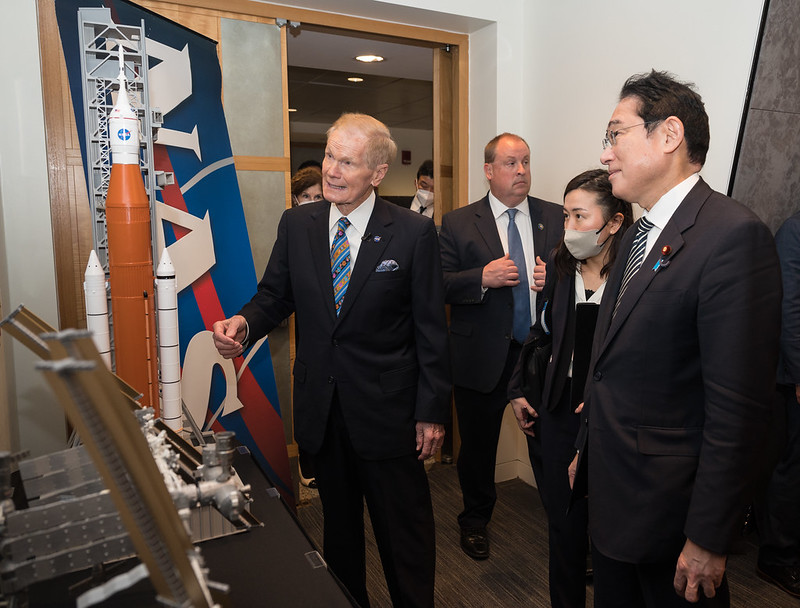United States and Japan Sign Agreement to Strengthen Partnership in Space Exploration
During an event hosted by NASA Administrator Bill Nelson and Deputy Administrator Pam Melroy at the agency’s Headquarters in Washington, representatives from the United States and Japan gathered to sign an agreement that builds on a long history of collaboration in space exploration between the two nations.
U.S. Secretary of State Antony J. Blinken and Japan’s Minister for Foreign Affairs Hayashi Yoshimasa signed the agreement on behalf of the United States and Japan, respectively.
“The future of space is collaborative,” said Blinken. “Through this agreement, our nations have strengthened our partnership in space and here on Earth. We will go farther and learn even more together.”
“I expect this agreement to vigorously promote Japan-U.S. space cooperation and expand areas of cooperation for the Japan-U.S. alliance, which is stronger than ever before,” said Kishida.
Among the other witnesses in attendance were U.S. Ambassador to Japan Rahm Emanuel, Japanese Ambassador to the U.S. Tomita Koji, Japan Aerospace Exploration Agency President (JAXA) Yamakawa Hiroshi, and Deputy Assistant to the President and Executive Secretary of the National Space Council Chirag Parikh. NASA astronaut Anne McClain and JAXA astronaut Hoshide Akihiko also participated in the event.
“From low-Earth orbit to the Moon and beyond, Japan is one of NASA’s most significant international partners, and this latest framework agreement will allow us to further collaborate across our agencies’ broad portfolios in exploration, science, and research,” said Nelson.
Known as the “Framework Agreement Between the Government of Japan and the Government of the United States of America for Cooperation in Space Exploration and Use of Outer Space, Including the Moon and Other Celestial Bodies, For Peaceful Purposes,” this pact recognizes a mutual interest in peaceful exploration.
Strengthening the space collaboration between the U.S. and Japan is a priority for both nations. The framework covers a broad swath of joint activities between the countries, including space science, Earth science, space operations and exploration, aeronautical science and technology, space technology, space transportation, safety and mission assurance, and much more.

The agreement will allow the two nations to collaborate on a wide range of projects and initiatives, such as:
- Space Science: The agreement will allow both countries to jointly conduct research and development on a wide range of space science topics, including the study of our solar system, the search for life beyond Earth, and the study of the origins of the universe.
- Earth Science: The agreement will also allow both countries to collaborate on Earth science research, such as studying the effects of climate change, natural disasters, and the impact of human activity on the environment.
- Space Operations and Exploration: The agreement will enable both countries to work together on the development and operation of new space vehicles and systems, such as lunar landers, rovers, and spacecraft. The two nations will also collaborate on future missions to the Moon and other celestial bodies.
- Aeronautical Science and Technology: The agreement will allow both countries to collaborate on research and development in the field of aeronautics, such as the design and development of new aircraft, drones, and other aerial systems.

